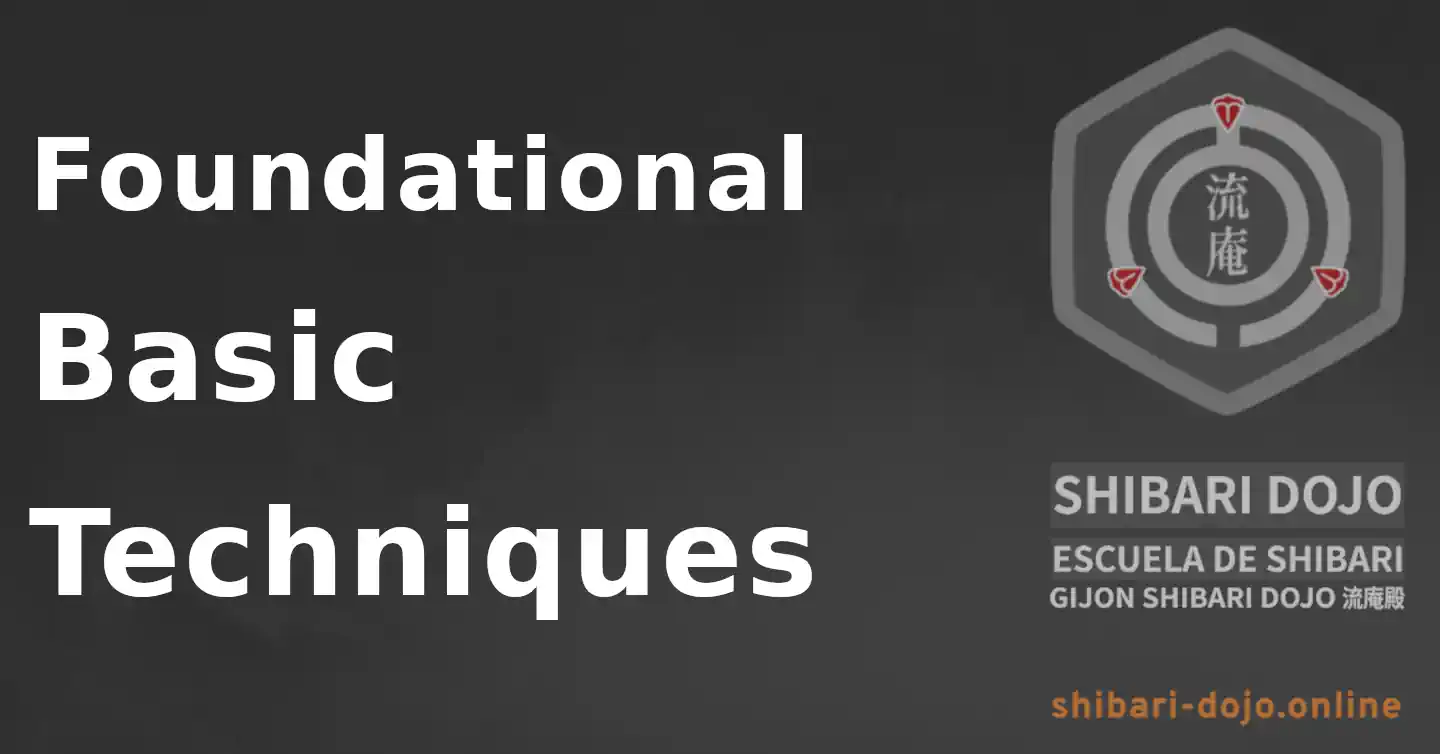At our dojo, we don't rely on canonical "shapes" to teach shibari. Instead, we build from the style's foundational principles and basic techniques.
With this approach, once students have absorbed these initial concepts, they can freely combine them according to their personal preferences, tastes, or the circumstances at hand.
As a result, you'll rarely see identical outcomes when different practitioners apply the same technique.
Shoden (初段): First Level of Yagami Ryu
In the initial level of Yagami Ryu (Shoden 初段), students focus on mastering five techniques in each of the three primary learning areas.
These techniques are built upon the fundamentals (Kihon 基本), which represent the most basic units of knowledge.
To illustrate this concept, we can draw a parallel with language: the fundamentals are akin to the letters of the alphabet, which we later combine to form phrases and ultimately craft compelling narratives.
This approach entails a steep initial learning curve, but the progression becomes significantly smoother as students advance.
For those new to this style, the learning process involves grasping concepts, developing physical skills, and engaging in introspective work through self-analysis, knowledge acquisition, and self-acceptance.
Clarity and Simplicity in the Fundamentals
The fundamentals are clear, concrete, and straightforward concepts, encompassing rope handling techniques, body posture, or time management.
However, due to their simplicity, these fundamentals often clash with previously acquired habits and tendencies that require adjustment.
The advantage of mastering technical fundamentals first is that they serve as a reliable foundation. If you ever feel lost or uncertain about how to progress your technique, revisiting these basics will provide clarity.
This is why this style consists solely of basics and their combinations, allowing for endless creative possibilities.
Once students have mastered these fundamentals, they progress to learning basic techniques.
In sekibaku, we emphasize techniques over "figures," enabling greater flexibility in adapting to each individual and situation.
Adaptation is crucial: the person tying must adjust to the person being tied, considering their physical condition, emotional state, the current moment, and the session's progression.
The aim of erotic shibari isn't to achieve a predetermined outcome, but to evoke responses.
It's not about reproducing rope patterns, but rather experiencing emotions—both for the person being tied and the one doing the tying.
In sekibaku, both participants actively engage and stand on equal footing in terms of power dynamics.
Gradual Process
At the beginning, not all techniques are introduced at once, as this would be overwhelming for students.
The learning process follows a clear progression: first understanding, then executing correctly, and finally applying creatively to craft something unique and beautiful.
In shibari, beauty is not optional.
The Five Basic Forms of Yagami Ryu
Classes and exercises focused on the basics may appear repetitive at first glance, but they always provide new insights and opportunities for growth.
To support the learning process, we use various kata (forms) specifically designed to practice techniques—much like handwriting workbooks are used when learning to write.
Basic Forms
- 古傳 (Koden Shibari)
- 返縄 (Kaeshinawa Shibari)
- 壱本縛 (Ippon Shibari)
- 脇晒し (Wakizarashi)
- 門 (Kannuki Shibari)
These techniques focus on body engagement and represent the five simplest approaches to shibari.
They involve restraints that activate the body, with ropes applied to reinforce the restriction and enhance stimulation.
With the exception of Kannuki Shibari, all of these are single-rope techniques.
Este contenido solamente está disponible para usuarios con suscripción. Pulsa aquí para conseguir una suscripción con la que acceder a este y a otros contenidos y servicios de nuestra web.
